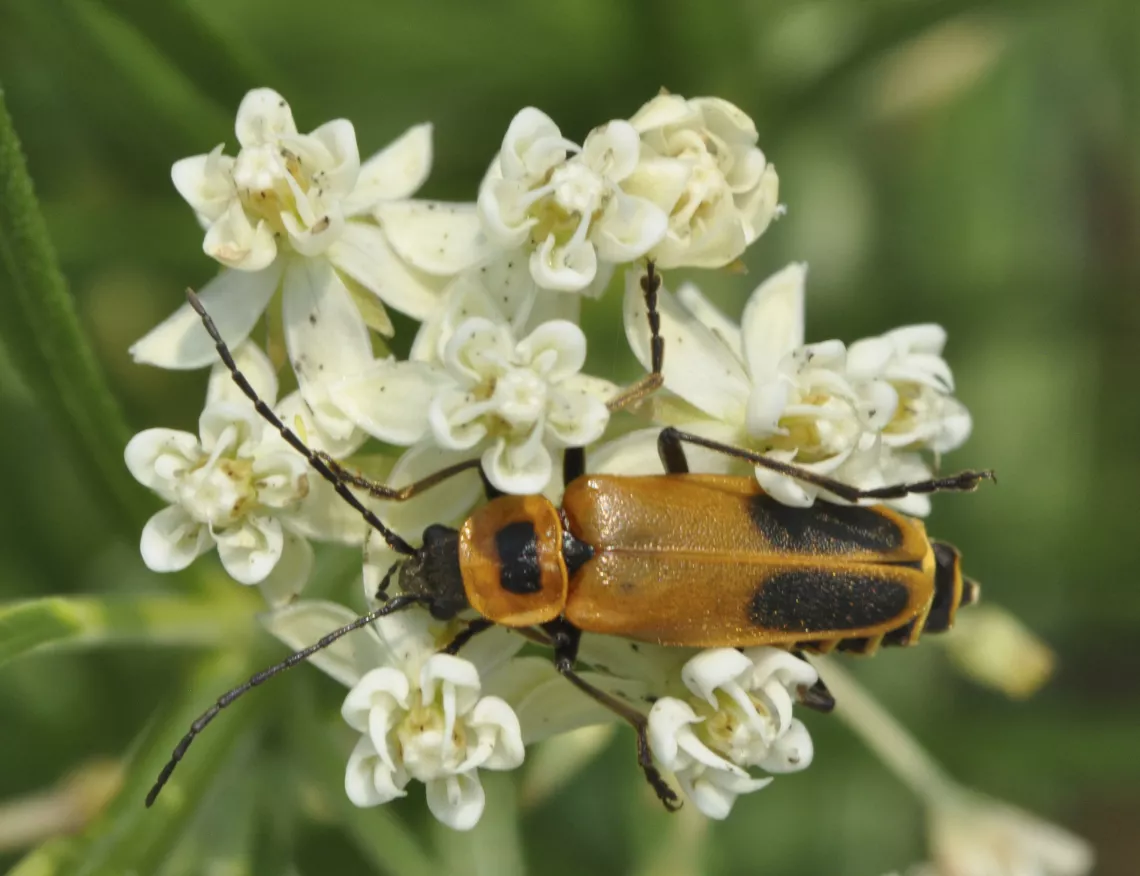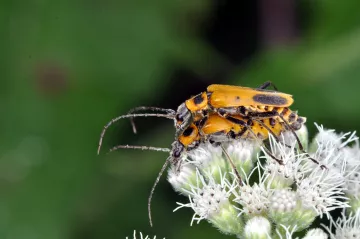Bob Suchanek

Photo credit: Bob Suchanek
Soldier beetles wear striking colors reminiscent of 18th century British soldiers, perhaps less to impress than to advertise to would be carnivores that they aren’t edible. Sometimes called leatherwings, their wing coverings (elytra) are softer than most beetles, a vulnerability that they overcome with a bad taste and nasty smell.
I’ve seen a lot of these showy beetles this September. They like to feed on the pollen and nectar provided by a variety of flowers, including milkweed, tansy, Queen Anne’s lace, and other late-summer flowers but are particularly fond of goldenrod. Equipped with chewing mouth parts, soldier beetles will eat small insects, caterpillars, insect eggs, and aphids. They are gardener’s friends and serve as pollinators, moving from flower to flower, as well as pest control agents.

Photo credit: Bob Suchanek
Soldier Beetle larvae, hatched from eggs laid in the soil, are also predators of other insects. Larvae live through the winter and become active in leaf litter and moist soil during the spring. They change into pupae in early summer and become adults in late July.
North America is home to many species of soldier beetles but the Goldenrod Soldier Beetle is one of the most common in this part of the continent. Although the colors of soldier beetles vary, it’s easy to identify Chauliognathus pensylvanicus with its yellow wings and big black spots.
https://extension.umn.edu/yard-and-garden-insects/soldier-beetles
https://www.wildflower.org/gallery/result.php?id_image=31487